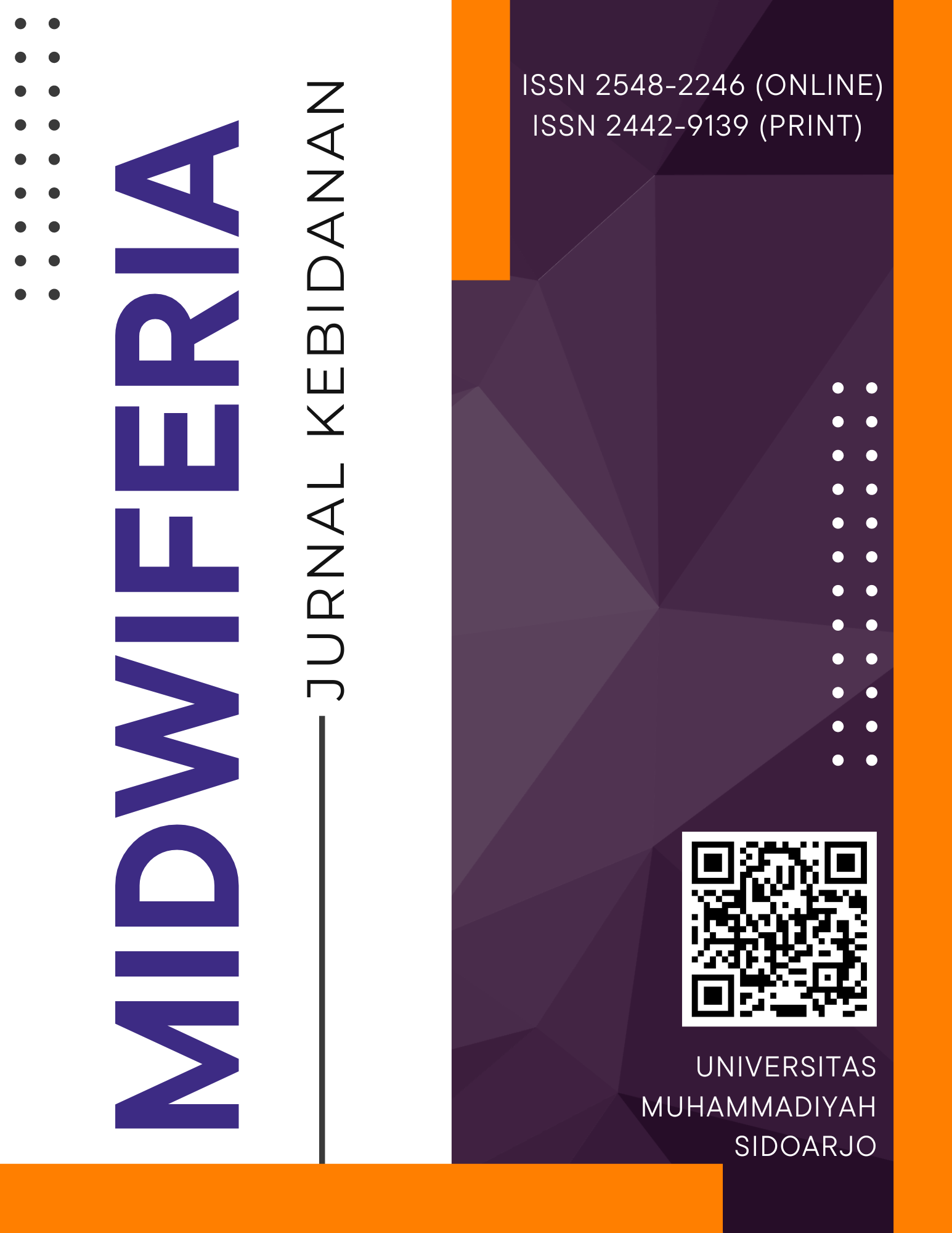Nurses’ Knowledge and Practices on Influenza Vaccination for Pregnant Women
DOI:
https://doi.org/10.21070/midwiferia.v10i2.1700Keywords:
Influenza, vaccination, pregnant women, nurses, knowledgeAbstract
Influenza poses significant health risks to pregnant women, leading to increased morbidity and mortality rates compared to the general population. Despite the proven efficacy of the influenza vaccine in mitigating these risks, vaccination rates among pregnant women remain suboptimal. This study examines nurses' knowledge and attitudes regarding influenza vaccination for pregnant women within the AL-Zubair primary health sector in Basrah, Iraq, addressing the gap in understanding healthcare providers' roles in promoting vaccination. Prior research has highlighted the need for enhanced education and communication strategies among healthcare workers to improve vaccination uptake, yet specific data on nurses' knowledge in this context are limited. The study aims to assess nurses' knowledge, attitudes, and practices regarding influenza vaccination for pregnant women. Among the 88 surveyed nurses, a majority demonstrated adequate knowledge and favorable attitudes towards vaccination, with significant gaps in awareness regarding the consequences of influenza for newborns. Notably, 51.1% acknowledged the vaccine's utility in protecting pregnant women. This research provides crucial insights into the educational needs of nurses, which are essential for fostering effective patient education strategies. The findings underscore the importance of targeted educational interventions to enhance nurses' understanding of influenza vaccination, ultimately aiming to improve vaccination rates among pregnant women and reduce associated health risks.
References
Bartolo, S., Deliege, E., Mancel, O., Dufour, P., Vanderstichele, S., Roumilhac, M., Hammou, Y., Carpentier, S., Dessein, R., Subtil, D., & Faure, K. (2019). Determinants of influenza vaccination uptake in pregnancy: A large single-centre cohort study. BMC Pregnancy and Childbirth, 19(1), 370. DOI: https://doi.org/10.1186/s12884-019-2628-5
Bartolo, S., Mancel, O., Deliege, E., Carpentier, S., Dessein, R., Faure, K., & Subtil, D. (2020). Determinants of pregnant women’s knowledge about influenza and the influenza vaccine: A large, single-center cohort study. PLoS ONE, 15(7), e0236793. https://doi.org/10.1371/journal.pone.0236793 DOI: https://doi.org/10.1371/journal.pone.0236793
Cox, S., Posner, S. F., McPheeters, M., Jamieson, D. J., Kourtis, A. P., & Meikle, S. (2006). Hospitalizations with respiratory illness among pregnant women during influenza season. American Journal of Obstetrics and Gynecology, 107(5), 1315-1322. DOI: https://doi.org/10.1097/01.AOG.0000218702.92005.bb
Englund, J. A., Mbawuike, I. N., Hammil, H., Holleman, M. C., Baxter, B. D., & Glezen, W. P. (1993). Maternal immunization with influenza or tetanus toxoid vaccine for passive antibody protection in young infants. Journal of Infectious Diseases, 168(3), 647-656. DOI: https://doi.org/10.1093/infdis/168.3.647
Fakonti, G., Kyprianidou, M., Iordanou, S., Toumbis, G., & Giannakou, K. (2022). General vaccination knowledge influences nurses’ and midwives’ COVID-19 vaccination intention in Cyprus: A nationwide cross-sectional study. Human Vaccines & Immunotherapeutics, 18(1), 1-9. https://doi.org/10.1080/21645515.2021.2016008 DOI: https://doi.org/10.1080/21645515.2021.2016008
Fiore, A. E., Shay, D. K., Broder, K., et al. (2009). Prevention and control of seasonal influenza with vaccines: Recommendations of the Advisory Committee on Immunization Practices (ACIP). MMWR Recommendations and Reports, 58(1), 1-52.
Grohskopf, L. A., Ferdinands, J. M., Blanton, L. H., Broder, K. R., & Loehr, J. (2024). Prevention and control of seasonal influenza with vaccines: Recommendations of the Advisory Committee on Immunization Practices — United States, 2024–25 influenza season. MMWR. Recommendations and Reports. DOI: https://doi.org/10.15585/mmwr.rr7305a1
Jones, E. W. (2005). “Co-operation in all human endeavour”: Quarantine and immigrant disease vectors in the 1918–1919 influenza pandemic in Winnipeg. Canadian Bulletin of Medical History, 22(1), 19–40. DOI: https://doi.org/10.3138/cbmh.22.1.57
Miller, A. C., Safi, F., Hussain, S., Subramanian, R. A., Elamin, E. M., & Sinert, R. (2010). Novel influenza A (H1N1) virus among gravid admissions. Archives of Internal Medicine, 170(10), 868-873. DOI: https://doi.org/10.1001/archinternmed.2010.126
Miller, A. C., Subramanian, R. A., Safi, F., Sinert, R., Zehtabchi, S., & Elamin, E. M. (2011). Influenza A 2009 (H1N1) virus in admitted and critically ill patients. Journal of Intensive Care Medicine, 26(6), 331–337. DOI: https://doi.org/10.1177/0885066610393626
Petrosky, E., Bocchini, J. A., Jr., et al. (2015). Use of 9-valent human papillomavirus (HPV) vaccine: Updated HPV vaccination recommendations of the Advisory Committee on Immunization Practices (ACIP). MMWR, 64(11), 303.
Picazo, M. M., Alonso, J., Aristegui, J. M., Bayas, J., Sanz, P., & del Amo, et al. (2012). Consenso sobre la vacunación frente a la gripe en el personal sanitario. Revista Española de Quimioterapia, 25(3), 226-339.
Quan, K., Tehrani, D. M., Dickey, L., Spiritus, E., Hizon, D., et al. (2012). Voluntary mandatory evolution of strategies and attitudes toward influenza vaccination of healthcare personnel. DOI: https://doi.org/10.1086/663210
Reid, A. (2005). The effects of the 1918-1919 influenza pandemic on infant and child health in Derbyshire. Medical History, 49(1), 29-54. DOI: https://doi.org/10.1017/S0025727300008279
Sarvas, H., Kurikka, S., Seppala, I. J. T., Makela, P. H., & Makela, O. (1992). Maternal antibodies partly inhibit an active antibody response to routine tetanus toxoid immunization in infants. Journal of Infectious Diseases, 166(3), 496–500. DOI: https://doi.org/10.1093/infdis/165.5.977






